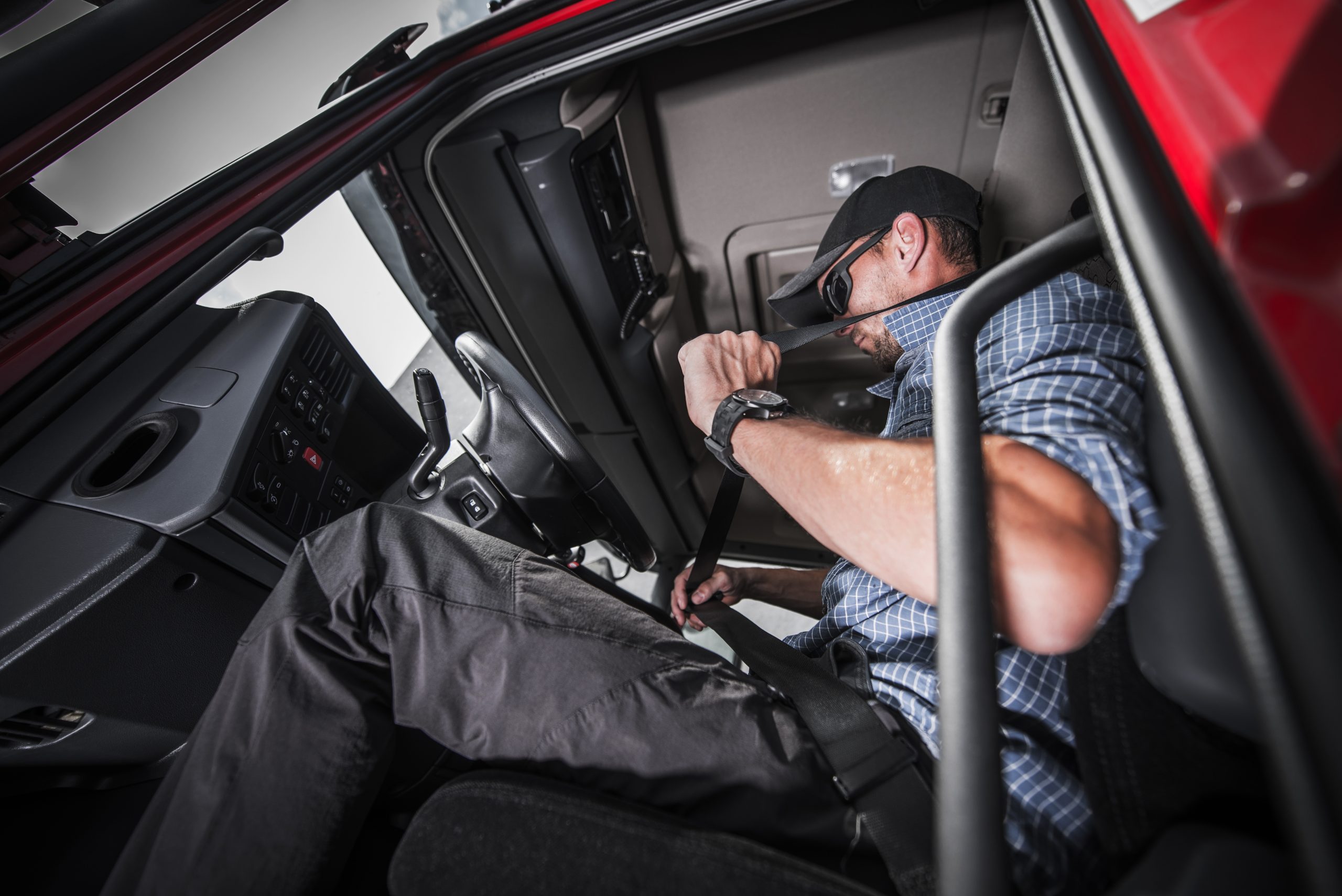Taking the proper driving safety precautions should be top-of-mind when you’re a trucker. There’s nothing more important than ensuring the safety of both you and fellow drivers your sharing the road with. However, when you’re driving for hours on end, taking all the right safety measures can be easier said than done. Whether it’s avoiding distracted driving or ensuring you’ve got a full night’s rest, there are many ways to ensure you are taking the proper safety precautions while driving your semi-truck.
At CRST Dedicated, we’re here to help our drivers as much as possible, which is why we’ve provided this trucking safety tips list to ensure you reach your destination safe and sound.
Wear Your Seat Belt
More than 40% of crash-related deaths occur every year from simply not wearing a seat belt. Studies show that about 1 in 6 truck drivers do not wear their safety belts. The use of seat belts is not only required, but it’s also the most simple and preventable way to prevent injury. Be sure you’re wearing your belt properly too by following these guidelines:
- Secure the lap belt across your pelvis or hips, not your stomach.
- Secure the shoulder belt across the rib cage. Don’t let it rub against your neck.
- Never put the shoulder belt behind your back or under an arm.
Do Not Use Your Cell Phone While Driving
An FMCSA study determined that if a truck is traveling at 55 MPH, texting would be the equivalent of driving the full length of a football field without the driver once looking at the road. They discovered when a truck driver reaches for their cell phone, they are over 6 times more likely to cause an accident. Cell phone use while driving leads to over 1.6 million crashes every year. Reading that text isn’t worth it. It can always wait, plain and simple. You and fellow drivers’ safety should always be top priority.
Avoid Drugs and Alcohol
While it may seem like a no-brainer, drinking and driving is extremely dangerous. Drugs include anything that impairs your judgment or physical faculties, this includes as medications that may cause drowsiness. Besides having safety concerns, being under the influence can also cost you your job.
Slow Your Truck Down for Turns and Curves
Be careful when making turns on a curvy road or at an off-ramp. Slow down accordingly to adjust for lane changes and other vehicles. Because of the wide turning radius of semi-trucks, it is extremely important to be fully aware of your space, especially when driving off-highway and on busy roads.
When turning right, turn wide but keep the rear of your truck close to the curb. When turning left, get into the center of the intersection before starting your turn. Always take the right-hand turn lane if there is one, as other vehicles are more visible from the left.
Always Maintain a Proper Stopping Distance
There’s a common formula for determining the proper braking distance of a semi. You must add together these three distances to come up with your total braking distance while taking your total weight into consideration:
Perception Distance: The time it takes an alert driver to see a hazard and their brain to recognize it is about ¾ of a second. At 55 mph a truck will travel 60 feet in that miniscule amount of time.
Reaction Distance: The time it takes a driver’s brain to tell the driver to brake is another ¾ of a second, during which a truck going 55 mph will travel an additional 60 feet.
Braking Distance: The time it takes the truck to stop once the brake has been applied is about 4 seconds. For a heavy vehicle at 55 mph, that means it can take another 390 feet to come to a complete stop.
Adding these three distances together, it will take about 6 seconds to stop a truck traveling at 55 mph and it will have traveled about 512 feet. The heavier the truck and the faster it is traveling, the greater the braking distance will need to be.
Eat Healthy and Get Plenty of Sleep
It may seem easy to grab a bag of chips and a soda at a rest stop for a quick snack but your body needs quality fuel just like your truck does in order to run smoothly. Skip the chips and reach for a healthy alternative, or plan ahead and pack your own healthy options instead.
In a study by the Department of Transportation, 87% of crashes were due to driver fatigue when the trucker was the main cause of the accident. Some truckers feel the need to drive while fatigues in order to meet deadlines. In reality, if you’re exhausted or reaching your time limit for the day, driving can wait. It’s not worth risking you or another driver’s life in order to get to your destination on time. Be sure to keep these points in mind to keep yourself well-rested:
- Get a good night’s sleep (at least seven hours) before driving
- Take breaks every two to three hours
- Avoid traveling at times when you’d normally be sleeping
- Pull over and take power-naps when you start feeling drowsy
Next time you’re out on the road, keep these trucking safety tips in mind. Looking to start your trucking career? See what we have to offer.





